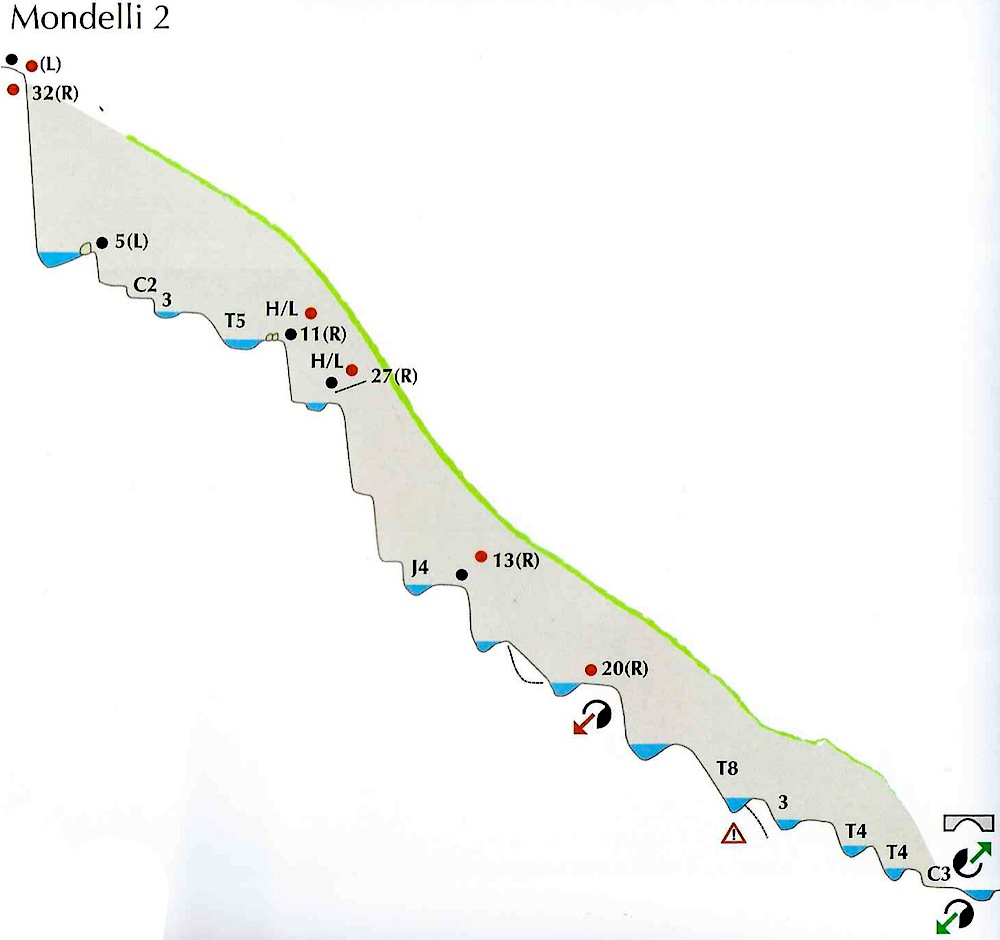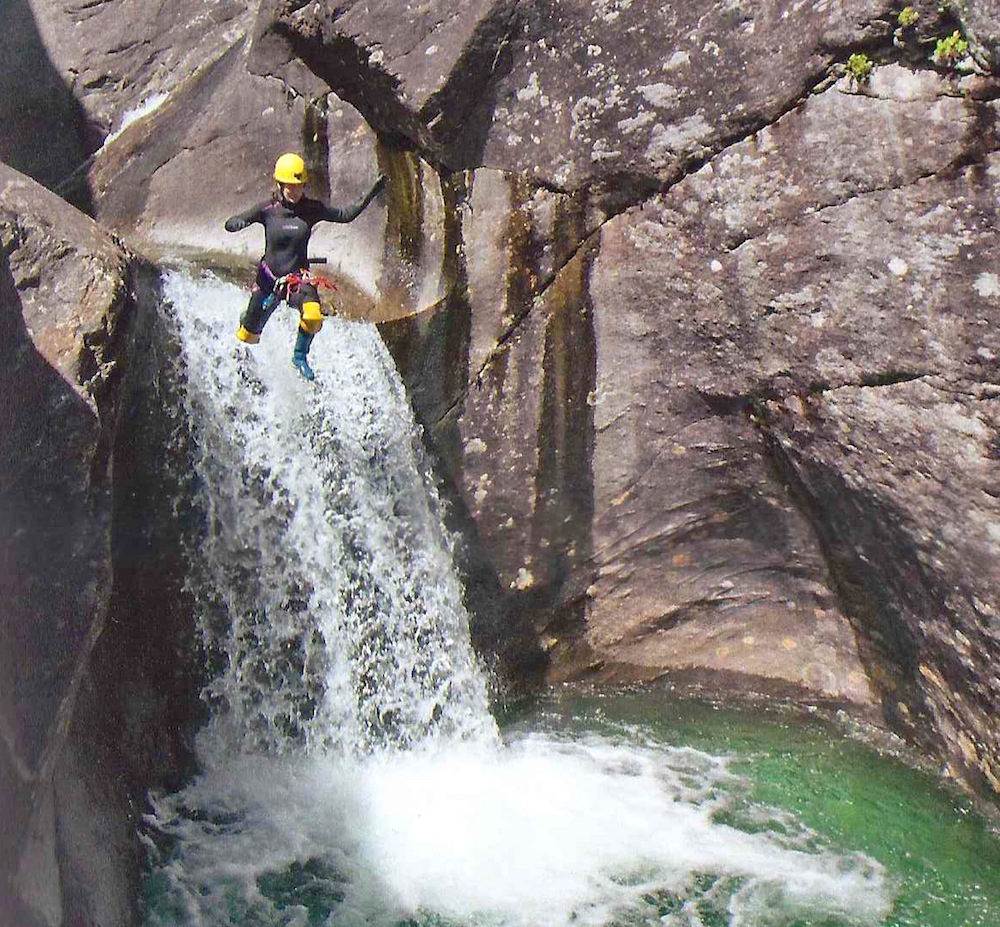
Review by Joe Bugden
Europe offers some amazing adventures for the keen canyoner. With countless classic routes — from highly aquatic multi-day canyons to mellow day trips — there is an unlimited supply of canyoning descents awaiting the canyon tourist.
The canyons themselves are almost always well-equipped and follow well established routes travelled by many local canyoners each season. Information is readily available in multiple printed guide books and online. Unfortunately, this information is generally in the language of the canyon’s geographic location, posing a serious problem for foreign visitors.
Previously, after lugging all your gear half way around the world, the biggest challenge prohibiting canyon descents in Europe for the English speaking canyoner was deciphering the available descriptions into usable information. In the last few years there have been a few attempts at bi-lingual canyon guide books, such as the Tour de Europe en Canyon series, they are unfortunately not ideal for English speakers. While thanks has to be given for including English at all in these guide books, they are often direct translations, hard to read, easy to misinterpret and not highlighting critical information on the selected route.
Canyoning in the Alps changes all that, providing the first dedicated canyon guide in English for the fantastic canyons of the Italian Alps and surrounds.

The short version:
This is an excellent guidebook that covers a large area, including a broad spectrum of canyon adventures from easy to hard.
With the inclusion of just under 100 descents in five different regions spread over four countries, this book is well thought out and excellently presented. It provides enough information to keep keen canyoners busy for a very long time. Whilst it is clearly not possible to cover every Canyon in the region, those selected are the region’s classics — along with a few notable descents in the same locale.
With multi-regional overview maps, detailed regional maps, canyon topos and full-page colour images that can’t help but catch your attention and inspire further investigation, this guide is sure to get you dreaming of a canyon holiday to Europe.
All the details required for canyon tourism are there: from accommodation right down to the inclusion of basic regional information such as location of shops and banks.
And when it comes time to get wet and climb into an actual canyon, you are well and truly covered, with access, egress and of course, the descent itself covered in great detail.

Now for the long version:
The introduction:
The introduction delves into the geology, geomorphology and history of canyoning in the Alps. It provides a fascinating insight into the structure, formation and discovery of the canyons themselves, before moving on to such practicalities as transport options, the dangers of canyoning in the Alps, canyon rope techniques (an excellent addition given the lack of English language canyoning technique information currently available in print), equipment recommendations and basic emergency information.
A detailed description of the European canyon grading system is provided, along with a breakdown of the ‘star’ rating system utilised in the book and crucial information for selecting an adventure appropriate to your skill level and expectations.
Also included are tips on canyon photography and an excellent appendix with:
- A canyon summary table (a quick-find guide with page numbers, rope lenghts etc…)
- Further information and resources (Non-English language guidebooks and website links)
- Campsite contact details (unlike Australia, there is little in the way of free bush camping in Europe, with most available campsite locations regulated and requiring payment… much like a caravan park)
- Tourist information offices in each region (handy for tracking down ‘rainy day’ options and other information)
- Glossary of technical terms (who knew a Quick-Link had so many names!)
- A historical guide to the names and dates of first descents in the Alps
- A route index and planner (another quick look guide to see what’s hot and what’s not!)

The Regions:
The five regions included in the book are covered with a general location map:
- Val d’Ossola (Italy)
- Ticino (Switzerland)
- Lake Como (Italy)
- Dolomites (Italy)
- Carnia and the Julian Alps (Italy / Austria / Slovenia)
The write-up on each of the regions in the book contains an incredible amount of useful information. Beginning with a general breakdown of the area, it quickly moves into descriptions of basic regional information such as:
- Climate info
- Accommodation tips and suggestions
- Locations of supermarkets and other essential services
- The availability of local gear shops (very handy when it comes to picking up something extra or replacing lost or damaged gear)
- Hospitals and other emergency information
- Local transport options
- Rainy day / rest day alternative activities (such as via ferrata, climbing, and hiking etc…)
For each region the reader is presented with an overview map indicating the geographic location of the canyons, nearby towns, access roads etc…
Choosing a canyon is made easy with the European canyon grading system and a star rating system to ensure you know what you’re up for and what to expect.

The Canyons:
The book is then further broken down into individual canyon descriptions with parking and car shuttle information.
Alternative walking access descriptions are also provided, which in my experience is an essential component as not all us canyon tourists have the luxury of two vehicles and a car shuttle is not always easily available.
Once you have got yourself to the car park you are then provided with access and exit track overview maps and very through description of required track information. This kind of information was previously unavailable for English speakers and has been the source of many a mis-adventure for me personally.
In the Canyon we are provided with canyon topo’s: a brilliant tool that explains at a glance, the character of the day’s adventure, escape routes, waterfall heights and much more.


Conclusion:
With canyon tourism growing amongst English-speakers, this book provides an amazing resource and has set a high standard for future publications. And when you can pick up a copy for just £19 on Amazon, the value for money is pretty good compared to other guides.
Massive thanks need to go to those who put it together. They have essentially saved people like me precious days driving around random villages looking for car parks or walking through random farmers’ fields scratching my head before eventually stumbling into the wrong canyon!
I eagerly await the northern summer so I can get over to Europe and get amongst it.

Rating:
- Usefulness — 5/5
- Value for money — 5/5
- Overall — 5/5
